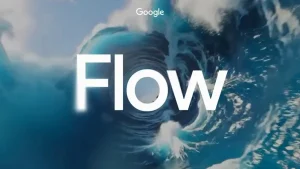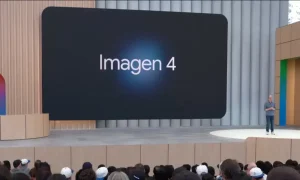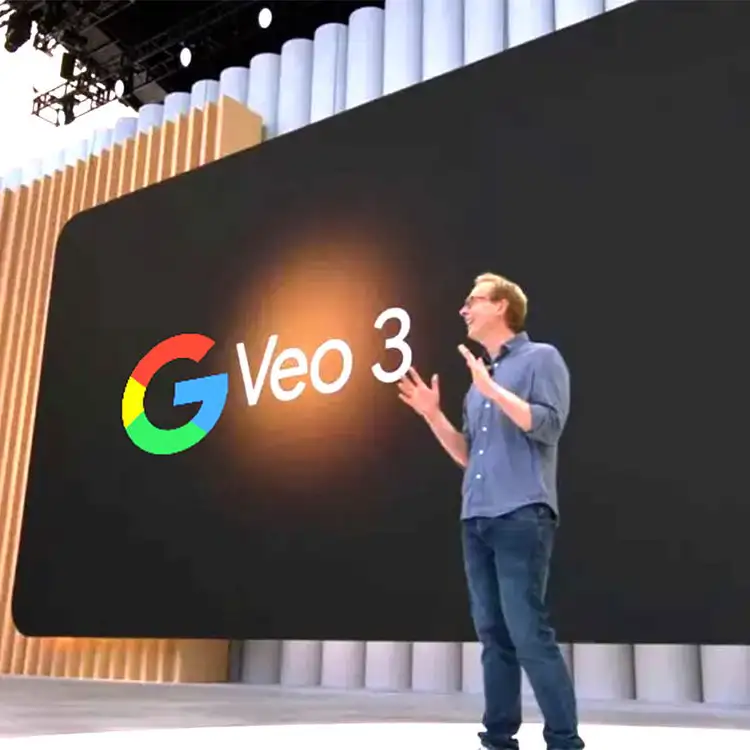At the I/O 2025 event, Google ushered in a new era of artificial intelligence by unveiling the third version of its video generation model, Veo. What sets this version apart from its competitors is its ability to generate video and audio simultaneously — a feature not yet seen in any similar models from companies like OpenAI, Meta, Stability AI, or Runway.
Veo 3 is capable of generating ambient sounds such as street noise, birdsong, and even dialogue between characters. Many consider this achievement a turning point in the history of video content creation and the beginning of a new era for AI technologies — so much so that it has been dubbed "the AGI moment for video."
A wave of praise from users on social media
With the introduction of Veo 3, social media quickly filled with videos created using this technology. Users have expressed amazement at the remarkable synchronization of image and sound, the precise physical rendering of objects, and even the lip movements matching the words.
One user on the X platform posted a video depicting Pythagoras teaching his famous theorem in ancient Greece. In another clip, a man performing stand-up comedy is seen successfully making the audience laugh.
Currently, Veo 3 is available to Ultra users in the United States through the Gemini and Flow apps, as well as to enterprise users via Vertex AI.
Flow Tool: A Revolution in the Filmmaking Process
Alongside the launch of Veo 3, Google also unveiled a new tool called Flow for filmmakers. This tool allows users to create cinematic scenes using simple language, combine assets in different shots, and have full control over the creative elements of the project.
According to Google, the design of Flow is inspired by moments when creativity is at its peak and time seems to stand still. This tool offers features such as camera movement control, shot creation and extension, and management of visual assets. A section called Flow TV also includes sample videos created with Veo, precisely showcasing their production process and commands.

A New Future for the Film Industry
Technology experts believe that Veo 3 can revolutionize the filmmaking industry. Daria Onotmaz, a professor at the Jackson Lab, predicts that films with the quality of animations like Toy Story, which used to take four years and millions of dollars to produce, can now be made in just a few days and at a fraction of the cost.
Some users also believe that in the near future, artificial intelligence will play a central role in producing short films and even high-budget cinematic works, especially being widely used in creating complex scenes and special effects.
Google also announced a collaboration with a project called Primordial Soup ; a story-driven series directed by Darren Aronofsky, in which three short films are created using AI tools. These works will be directed by emerging filmmakers, with Aronofsky serving as a mentor alongside them.
Imagen 4: A Major Leap in AI Image Generation
Alongside Veo 3, Google also introduced its advanced image generation model called Imagen 4. This model can produce 2K images with exceptional detail — including fabric textures, water droplet reflections, and animal fur — and has demonstrated stunning performance in both realistic and artistic styles.
Imagen 4 has also improved in generating visual text and can be used for designs such as greeting cards, promotional posters, and custom comics. This model is accessible through tools like Gemini, Whisk, Vertex AI, and the Google Workspace suite (including Slides, Vids, and Docs), and it directly competes with OpenAI’s image generation model.

Conclusion: Google's Leadership in the AI Race
With the launch of Veo 3 and Imagen 4, Google has shown that it is not only keeping pace with competitors but also shaping the future of artificial intelligence. Veo 3, with its ability to generate video and audio simultaneously, delivers an unprecedented experience in video content creation, while Flow transforms the filmmaking process by providing professional tools.
On the other hand, Imagen 4, with its high quality and remarkable precision, elevates designers and artists to a new level of creativity. These innovations demonstrate that the future of content creation will not only be smarter, but also significantly faster and more imaginative.


